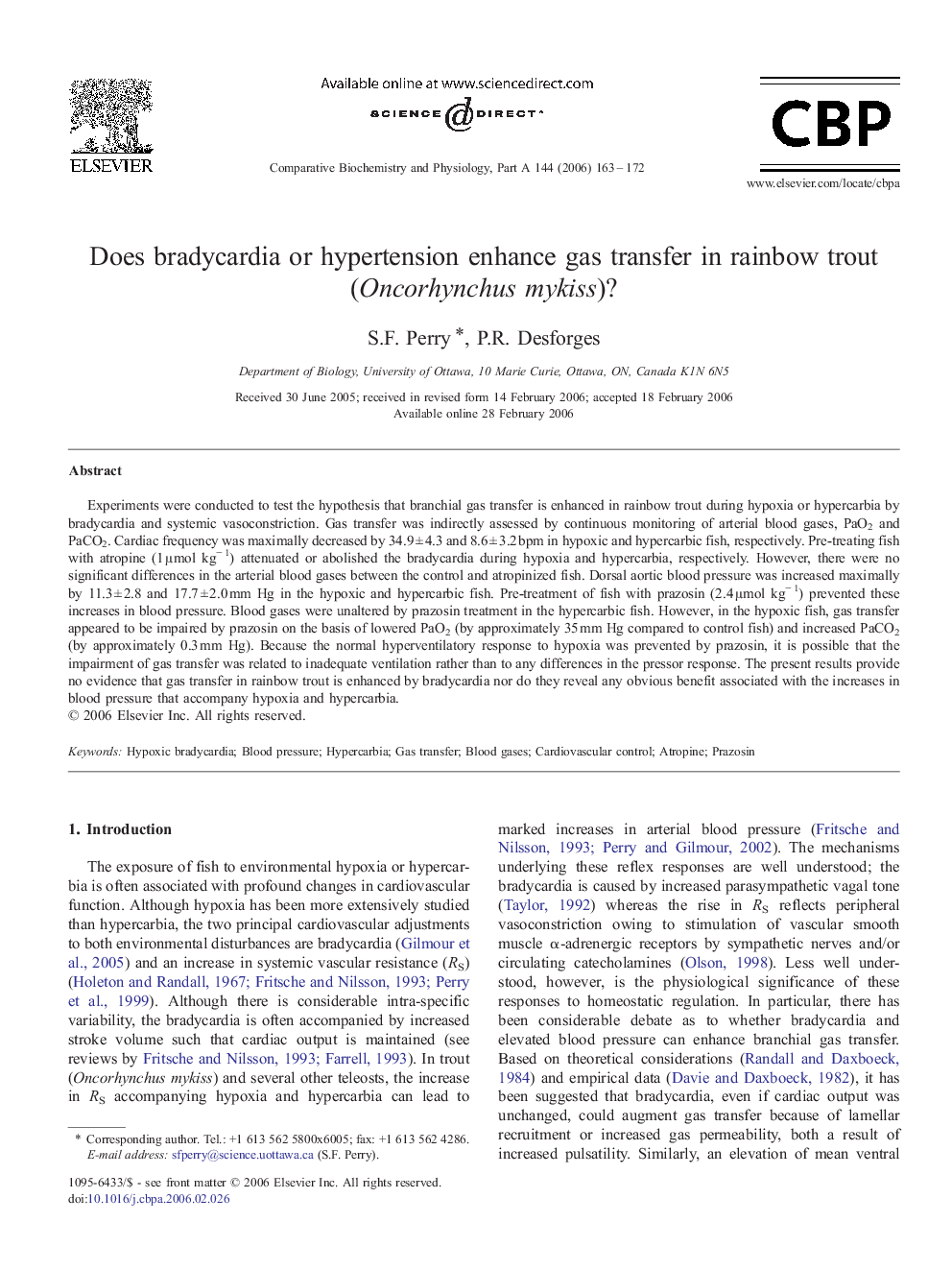| Article ID | Journal | Published Year | Pages | File Type |
|---|---|---|---|---|
| 1973786 | Comparative Biochemistry and Physiology Part A: Molecular & Integrative Physiology | 2006 | 10 Pages |
Experiments were conducted to test the hypothesis that branchial gas transfer is enhanced in rainbow trout during hypoxia or hypercarbia by bradycardia and systemic vasoconstriction. Gas transfer was indirectly assessed by continuous monitoring of arterial blood gases, PaO2 and PaCO2. Cardiac frequency was maximally decreased by 34.9 ± 4.3 and 8.6 ± 3.2 bpm in hypoxic and hypercarbic fish, respectively. Pre-treating fish with atropine (1 μmol kg− 1) attenuated or abolished the bradycardia during hypoxia and hypercarbia, respectively. However, there were no significant differences in the arterial blood gases between the control and atropinized fish. Dorsal aortic blood pressure was increased maximally by 11.3 ± 2.8 and 17.7 ± 2.0 mm Hg in the hypoxic and hypercarbic fish. Pre-treatment of fish with prazosin (2.4 μmol kg− 1) prevented these increases in blood pressure. Blood gases were unaltered by prazosin treatment in the hypercarbic fish. However, in the hypoxic fish, gas transfer appeared to be impaired by prazosin on the basis of lowered PaO2 (by approximately 35 mm Hg compared to control fish) and increased PaCO2 (by approximately 0.3 mm Hg). Because the normal hyperventilatory response to hypoxia was prevented by prazosin, it is possible that the impairment of gas transfer was related to inadequate ventilation rather than to any differences in the pressor response. The present results provide no evidence that gas transfer in rainbow trout is enhanced by bradycardia nor do they reveal any obvious benefit associated with the increases in blood pressure that accompany hypoxia and hypercarbia.
